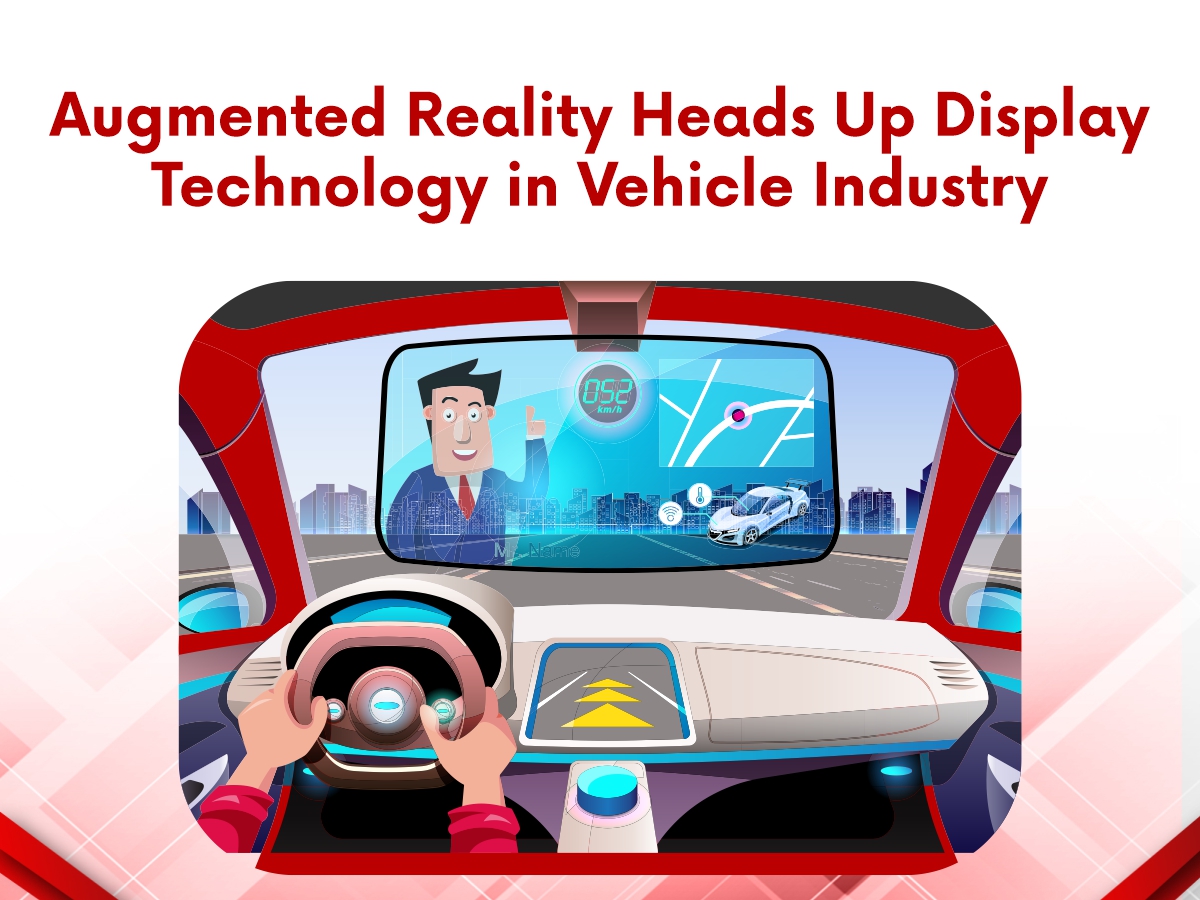
Close


Changing technology is redefining the way we drive. Virtual and augmented reality have drastically enhanced the driving experience by fitting innovative and intuitive navigation systems in vehicles. The Augmented Reality Heads Up Display Technology is upgrading this to the next level. So, in today’s blog, we will discuss “Augmented Reality Heads-Up Display Technology in Vehicles”. So, before, let’s understand what an augmented reality heads-up display is.
An augmented reality head-up display shows the text, photos, and even 3D animations on your windscreen. You can swiftly scan through intuitive and helpful information and warning indicators, enabling you to react more quickly to changing roadside circumstances.
Your windscreen will clearly show warning messages for things like speed restrictions and will highlight your route utilising arrows on the road 10 meters ahead. Two image planes are used to display the information: one is used for close-up static 2D displays, and the other is used for far-off dynamic 3D displays. The market for AR HUDs was estimated to be worth USD 2.14 billion in 2020; by 2028, it is expected to have grown to USD 13.97 billion, with a CAGR of 26.43%.
The reason why people are shifting towards AR-HUD is Safety. The smallest distraction on road rooted in the loss of focus can become a reason for a fatal accident. The AR-HUD helps to ensure that you always maintain your eyes on the road by putting all the information you need while driving in the driver’s field of vision.
With AR-HUD, you don’t need to convert the information displayed on the mobile or integrated dashboard screen into the actual road because it is superimposed on top of the actual road.
For instance, a complicated intersection can have some left turns. You can quickly determine which turn to make using AR-HUD because it superimposes directions on the actual road.
The HUD lessens the need for drivers to become distracted by looking away from the road to check vital information, like speed and navigational data. HUDs are playing a crucial role in boosting people’s confidence in ADAS, which is taking over the worldwide car market.
BMW debuted the BMW Virtual Viewer, its first augmented reality tool, in the UK in April 2021. Customers would have a completely new way to choose, research, and explore BMW’s Plug-in Hybrid Electric Vehicles, as well as completely new ways to customize a BMW model (PHEVs). This innovative tool may be used by potential clients with ease through a web browser with no download.
A new augmented-reality head-up display (HUD) that can show drivers things on the road, lane borders and similar information was unveiled by Panasonic Automotive in January 2021. Because it has artificial intelligence, it can transmit important information like if something is a trash can, a pedestrian, or a car. If the driver’s head turns in less than 300 milliseconds, the system can also make adjustments.
Various high-end vehicles with HUD and service help programmes use augmented reality.
Mercedes-Benz debuted its new S-Class in 2020, which features a luxurious saloon that can be experienced with all four senses—smell, hearing, touch, and sight. It would offer several advancements in terms of engagement, safety, and help. It also includes a sizable HUD with augmented reality navigational elements.
Hyundai and Snapchat teamed up to introduce a new augmented reality lens in April 2021, allowing people to explore the Hyundai Kona in their homes. By scanning a Snapcode or looking for the lens in the Lens carousel, they can quickly bring the automobile into their homes. Similarly, to this, the business invested in WayRay AG in September 2018 to create holographic AR-based navigation systems for cars in the future.
Continental debuted its newest Head-up Display (HUD) with exclusive waveguide technology for automobiles in October 2018. It was created in collaboration with the business and DigiLens Inc., a known authority on projection technology. This HUD would enable augmentation over a wide area.
Introducing AR HUDs (Augmented reality Heads Up display Technology) in vehicles is genuinely transformative, even though conventional HUDs have enhanced the driving experience.
It might end up being the most significant screen in the car because of the flawless integration of electronics, software, and optics. Controlling the vehicle will increasingly include language and gestures rather than meticulously manipulating the various buttons and dials as autonomous driving gains popularity.
Once more, AR HUDs can aid in the comprehension of ADAS as the system assumes greater responsibilities for vehicle control and eventually eases drivers into autonomous vehicles.
Want to know more about such information, then visit: Market Research
Please Subscribe our news letter and get update.
© Copyright 2023 – Wissen Research All Rights Reserved.
Powered by VintageCoders